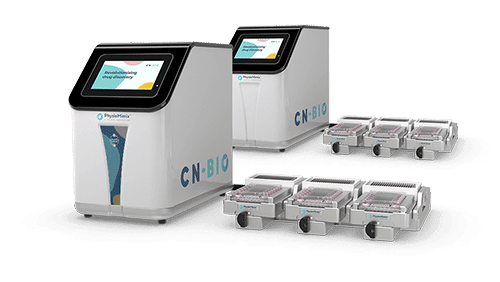Webinars

Beyond hepatotoxicity red flags
Webinar Series 6 Episode 1
Standard preclinical approaches are poorly predictive, particularly for drugs eliciting human-specific toxicity or idiosynchratic DILI. In this webinar, Dr. Anthony Berger, a Field Application Scientist at CN Bio will discuss how liver-on-a-chip (LOAC) cocultures of primary hepatocytes offer a solution.
Brochures & Flyers
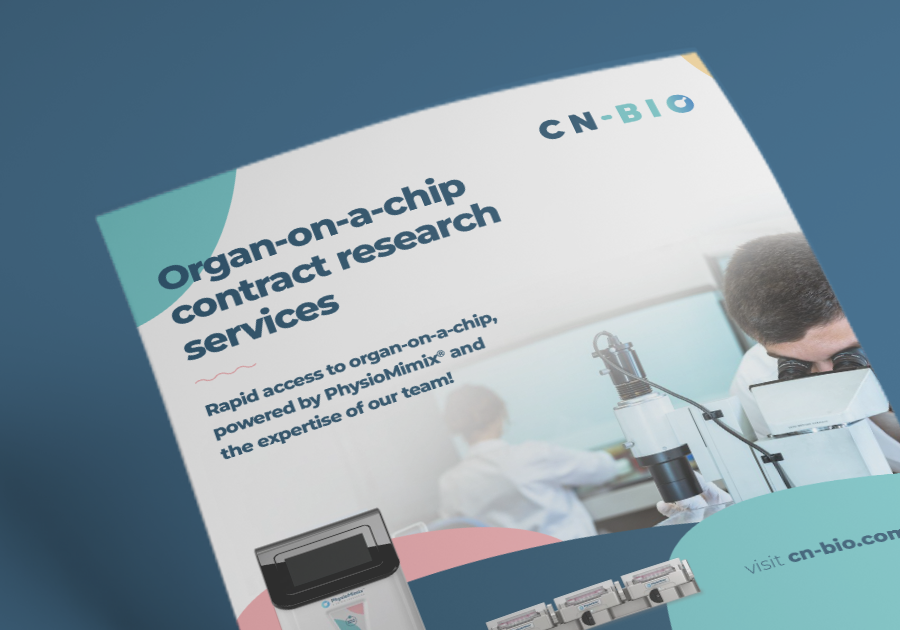
Organ-on-a-chip Contract Research Services Brochure
Discover our full range of Organ-on-a-chip contract research services including ADME, NASH, DILI and Oncology as well as all the relevant endpoints.
Application notes
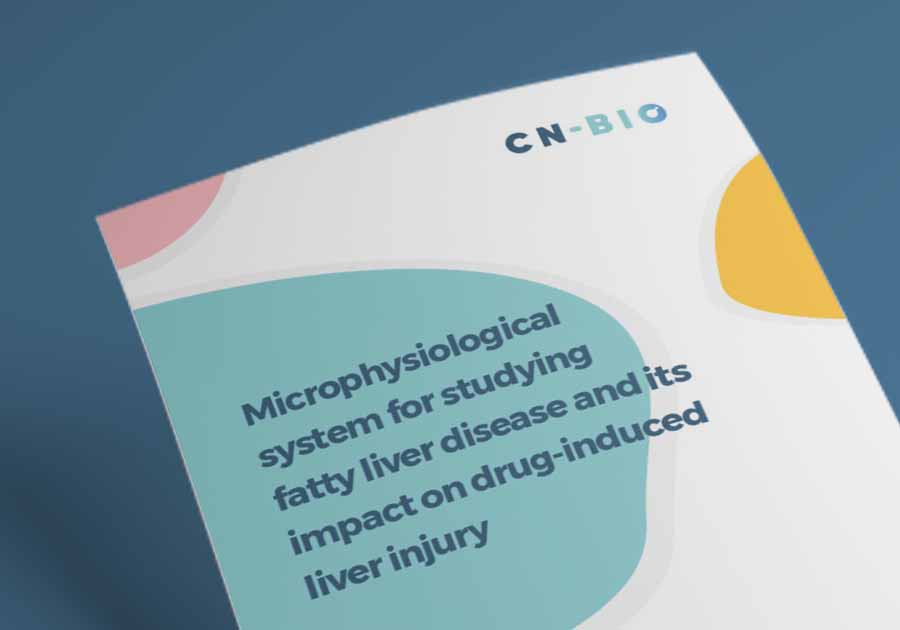
Microphysiological system for studying fatty liver disease and its impact on drug-induced liver injury
Kostrzewski et al
As a result of the increased prevalence of diabetes, obesity, and metabolic syndrome, non-alcoholic fatty liver disease (NAFLD) is now the most common chronic liver disease in developed countries. Using better in vitro models to fast-track therapeutic development but also accurately assess DILI risk in NASH patients ahead of the clinic is critical. Here, we show the potential of an in vitro 3D NASH model to accurately identify any DILI-associated risks.
Scientific publications
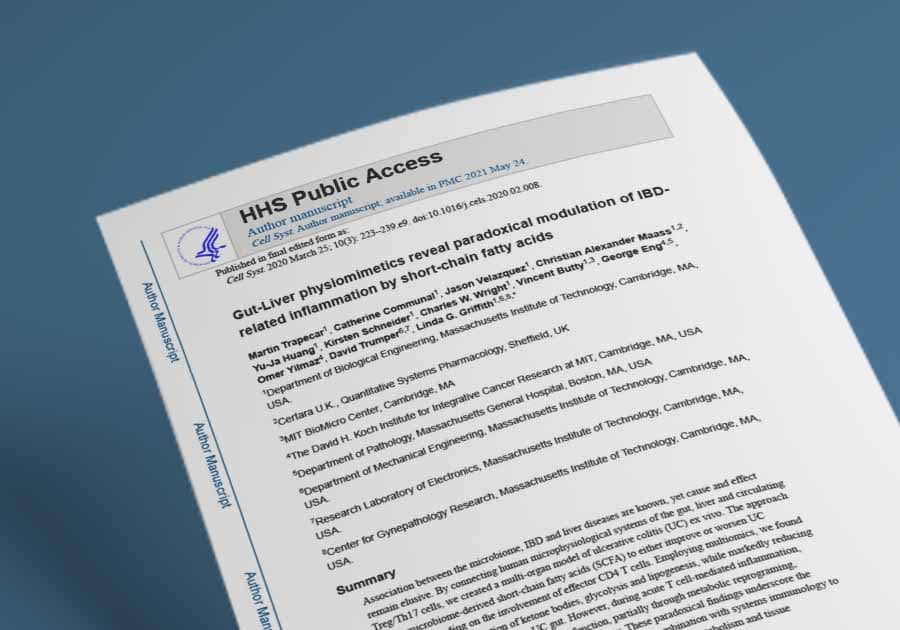
Gut-Liver Physiomimetics Reveal Paradoxical Modulation of IBD-Related Inflammation by Short-Chain Fatty Acids
Trapecar et al., 2020
A multi-organ model of ulcerative colitis connecting the gut, liver and circulating Treg and Th17 cells. By integrating immune cells, the effect of microbiome-derived short-chain fatty acids on inflammatory bowel disease can be studied.
Scientific publications
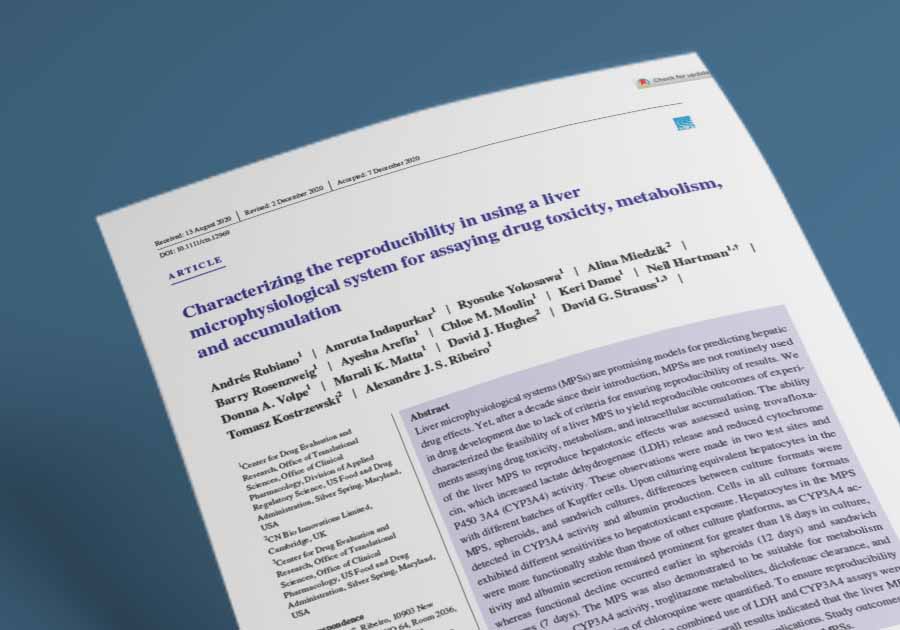
Characterizing the reproducibility in using a liver microphysiological system for assaying drug toxicity, metabolism and accumulation
Rubiano et al., 2020
This study demonstrated the ability of the CN Bio’s PhysioMimix liver model to generate reproducible results from experiments assaying metabolism, drug toxicity and intracellular accumulation. The results from the paper showed that the liver MPS can be routinely used in general drug evaluation applications.
Videos and animations

Predicting the future: humanised drug evaluation testing using organ-on-a-chip technology
CN Bio’s mission is to transform drug discovery through the development of disruptive single and multi-organ microphysiological systems (MPS) -otherwise known as organ-on-a-chip – that optimize the accuracy and efficiency of bringing new medicines to market.
Scientific publications

Integrated gut and liver microphysiological systems for quantitative in vitro pharmacokinetics studies
Tsamandouras et al., 2017
There is a need for more physiologically-relevant in vitro models to better investigate the efficacy and pharmacokinetics (PK) of compounds in the early stages of drug development. Here, we demonstrate the potential of a multi-organ (gut-liver) MPS combined with quantitative mechanistic modeling to accurately assess the PK of new therapeutics.
Scientific publications
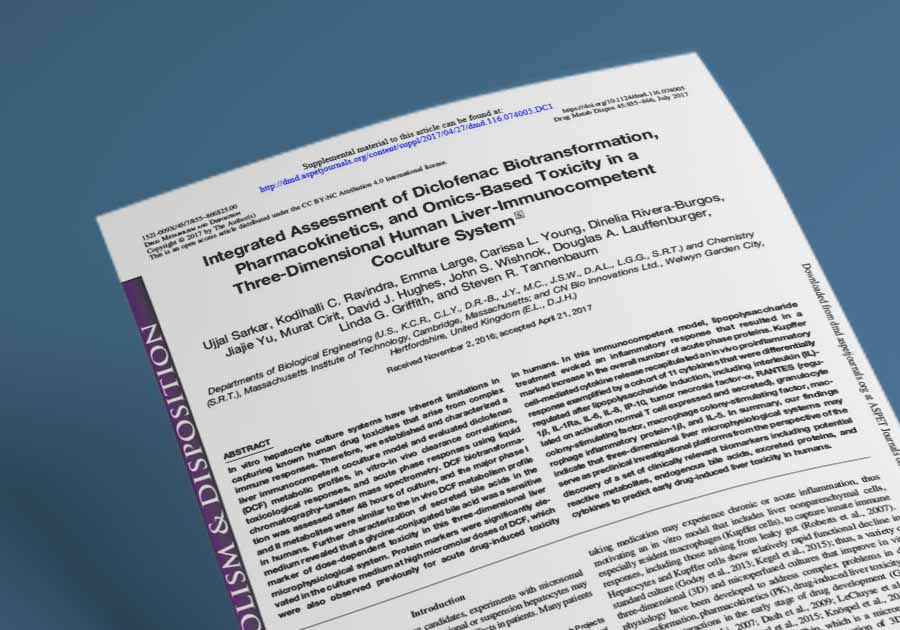
Integrated assessment of diclofenac biotransformation, pharmacokinetics and omics-based toxicity in a 3D human liver-immunocompetent co-culture system
Sarkar et al., 2017
The paper demonstrates how 3D liver MPS may serve as preclinical investigational platforms for the discovery of a set of clinically-relevant biomarkers, including potential reactive metabolites, endogenous bile acids, excreted proteins, and cytokines to predict early drug-induced liver toxicity in humans.
Scientific publications
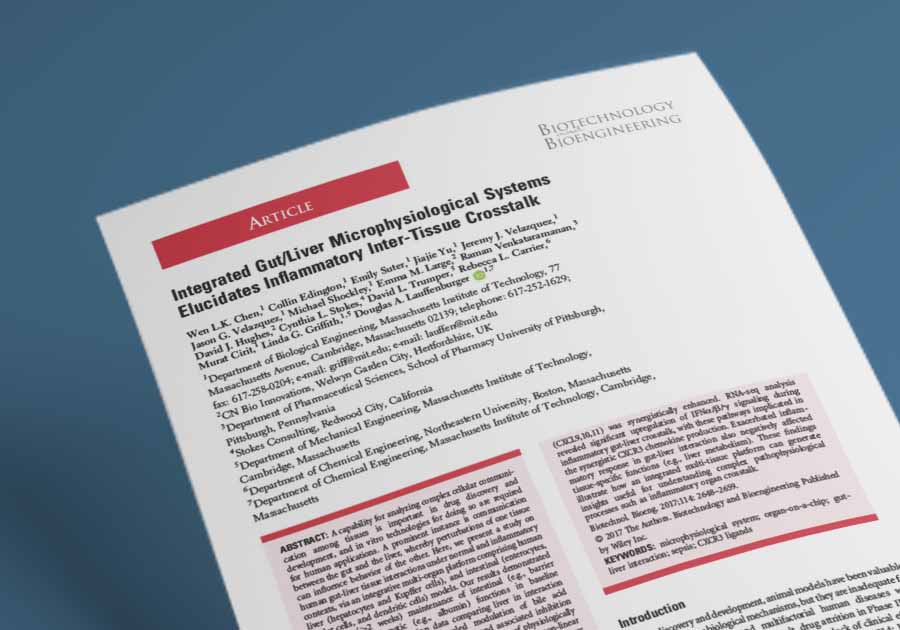
Integrated gut/liver microphysiological systems elucidates inflammatory inter-tissue crosstalk
Chen et al., 2017
Animal models are the only way to understand the complex systemic effects of drugs in organisms; however, they often fail to translate to humans. Here, we demonstrate the potential of a multi-organ model to study inflammatory organ crosstalk between the gut and liver.

